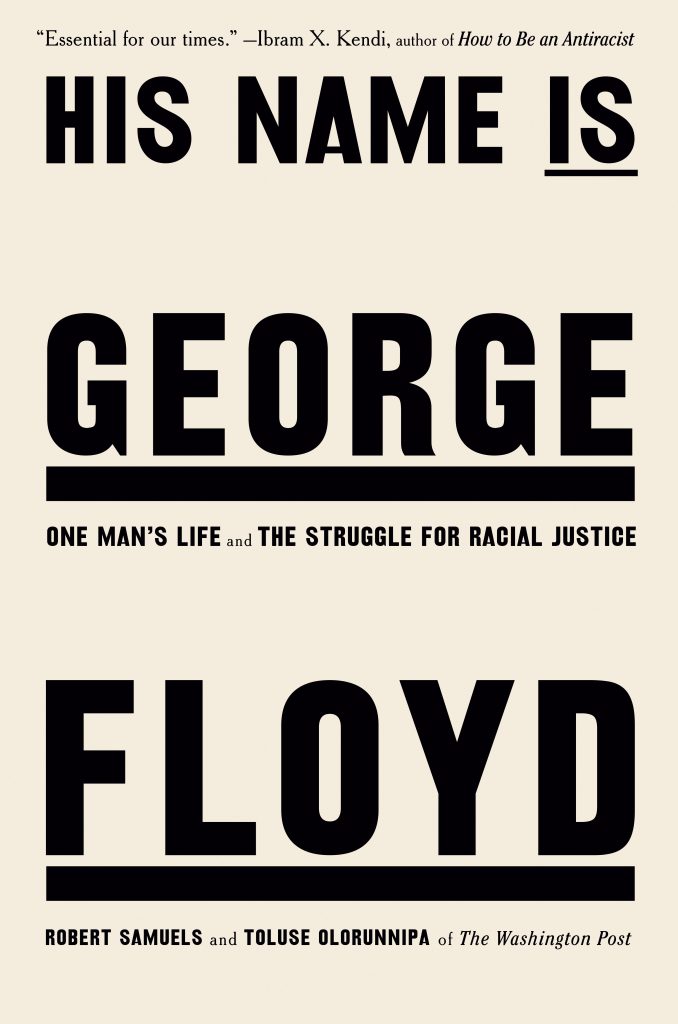By Terri Schlichenmeyer
The pavement was hard.
At that time of day, it still held the last of the sun’s warmth but that didn’t make it comfortable. Pebbles embedded in blacktop can bloody skin in a minute; bits of broken glass can scratch a cheek lying on the concrete. Street-side is never a good place to be, and in the new book, “His Name is George Floyd” by Robert Samuels and Toluse Olorunnipa, it gets worse.
Everyone who knew George Floyd knew that he loved them. He said so, in texts and in person, every time he saw them. That’s the kind of man he was.
 Born in North Carolina in 1973, Floyd was a joyous child surrounded by female relatives who doted on him, and missed him badly when his mother took her children and followed a man to Houston. There, the family lived in a neighborhood that was mostly Black and all poor, and Floyd gained two younger half-brothers.
Born in North Carolina in 1973, Floyd was a joyous child surrounded by female relatives who doted on him, and missed him badly when his mother took her children and followed a man to Houston. There, the family lived in a neighborhood that was mostly Black and all poor, and Floyd gained two younger half-brothers.
The authors say that Floyd wasn’t the best student at Jack Yates Senior High School in Houston, but he wasn’t the worst. Teachers and students liked him; coaches liked him because he could really play basketball and football. He was gentle; they had to notch up his fierceness in both games but since he was more than six feet tall and a couple hundred pounds, there was promise. Which was just enough.
Much to his heartbreak, Floyd couldn’t pass the TAAS test given to assess the proficiency of all high school seniors in Texas. No pass, no diploma, but though he wasn’t able to attend his graduation ceremony, he did land a basketball scholarship to South Florida Community College. Alas, bad grades followed him there and he soon returned to Houston, frustrated and broke, and he began selling drugs.
That didn’t go well, either: Floyd was arrested, convicted, and sent to prison.
More than four years later, with a felony on his record, Floyd decided to move to Minneapolis. It was a chance for a fresh start…
While it may seem that “His Name is George Floyd” might be too painful to read, even now, two years after his death, that’s not so. Not entirely.
There are huge pockets of sunny joy in this book, at a childhood enjoyed, dreams reached for, and people beloved. Those sides of Floyd, parts that were missed by many news outlets, are shared but authors Robert Samuels and Toluse Olorunnipa don’t let him become larger than life; Floyd had flaws, and we’re allowed to see them.
Then again, there are times when George Floyd becomes almost a side-note here.
That’s when Samuels and Olorunnipa turn away to focus on what else happened that boiling-hot summer of 2020, including the BLM protests, politics, and other incidences of police overreach; we also get a good overview of Derek Chauvin, his background, and his trial.
Readers who want to somehow memorialize Floyd will appreciate this book for its candor, good research, and its storytelling. You’ll also want “His Name is George Floyd” for its concrete answers.




